The Restoration Academy
In the aftermath of a disaster, a quick, well-organized response is required. Every hour that passes can make returning the property to its original state more difficult and more expensive. So homeowners, commercial building owners, business managers and insurance companies are expected to restore the structure quickly and inexpensively no matter whether it was fire, water or mold that caused the damage.
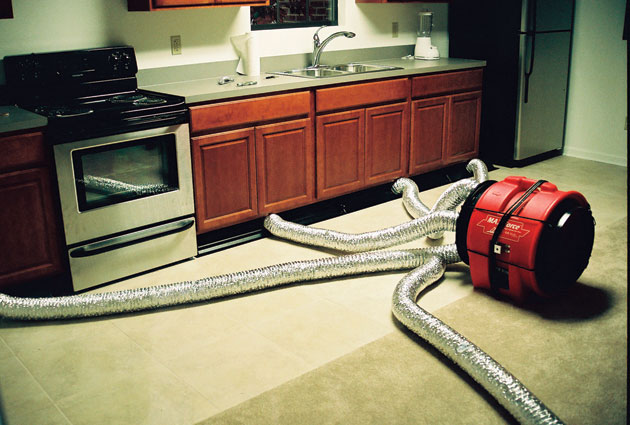
"We came up with what we call 'dry in three,' which basically guarantees we will dry out that structure within three days," said Scott Baker, president and CEO of Paul Davis Restoration.
To help teach the industry how to do this, Paul Davis Restoration, Inc. built a 17,000-square-foot restoration training center in Jacksonville, Florida. The centerpiece of the facility is, undoubtedly, its flood house -- a full-scale, fully functional residential structure housed within the center. The 1,700-square-foot home has a full-size bedroom, living room, kitchen, dining area and bathroom and was constructed to Florida building code standards. It even comes complete with furniture, flooring, electronics and home decor.
The house is flooded with thousands of gallons of water and drained -- time and time again -- to teach students how water affects building materials, including carpet, drywall, wood and tile. Paul Davis Restoration stresses, through training, that it is not necessary to tear out and replace water-damaged areas when it is possible to dry them thoroughly. "It saves the insurance company money, and it saves the homeowner a ton of inconvenience and property disruption," said Tracy Bachtell, senior vice president of business development at Paul Davis Restoration.
The training center, which was modeled after a now-closed Toyota educational facility, is also home to two theater-style classrooms. Here, the company hosts several approved certification courses from the Institute of Inspection, Cleaning and Restoration Certification (IICRC). Classes are offered in everything from structural clean up and smoke restoration to odor control and water damage mitigation. The training is conducted by, among other professionals, two of the only 17 IICRC-certified Applied Structural Drying instructors in the United States.
Since Paul Davis Restoration was founded (as Paul Davis Systems) in 1966, the company has worked to become specialists in the areas of property damage mitigation, reconstruction and remodeling. Long ago, the company proved itself as an industry leader. But in building this training center, it now has a place that the entire restoration community can take pride in -- and learn from. "This training facility is the culmination of a lot of activities over many years," said Baker. "It gives us the opportunity to show the insurance industry that we are really the best in training in the industry and this is our commitment to it."
–Emily Holbrook
Research and Destroy
Situated on 1,600 acres in West Glocester, Rhode Island, FM Global's Research Campus is the kind of place your mother might have warned you about -- that is, if she ever could have envisioned a place where fires, explosions and hurricane-force winds are purposely created on a daily basis. But despite the mayhem, the FM Global Research Campus is a state-of-the-art facility in which destruction has become invaluable for product testing and property loss-prevention research.
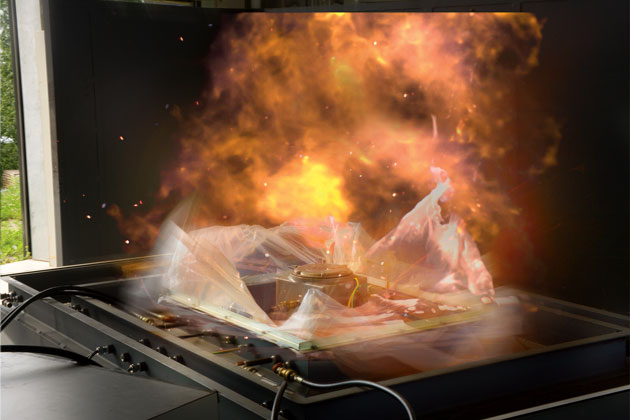
Over the past decade, FM Global's scientists and engineers have been replicating all manner of natural and man-made disasters for clients and manufacturers, vividly demonstrating the importance of safety improvements to prevent a catastrophe. The facility also conducts third-party product testing for manufacturers that want to meet the FM Approved standard for property loss prevention.
The FM Global Research Campus features a variety of laboratories that simulate and test a wide range of hazards. The Fire Technology Lab is the largest and most awe-inspiring. With 108,000 square-feet of space, researchers are able to replicate even the largest warehouse fires, complete with large movable ceilings that can reach as high as 60 feet to simulate almost any structural dimensions or accommodate any storage configuration.
The lab also boasts a giant fire products collector, measuring 35 feet across, that allows scientists to analyze the by-products of a fire to further assess the damage such a blaze can do. Sometimes their findings can be unexpected. A fire that burns natural materials, for instance, can actually be worse for the environment in terms of carbon emissions than a plastics fire.
Researchers are continually expanding their capabilities as well, and, according to FM Global Vice President and Research Manager Dr. Louis Gritzo, have recently begun experiments to validate new open-source computer models, study water spray and spray/fire interactions, and incorporate the latest laser and optical techniques to make new discoveries in fire dynamics.
While less dramatic, but no less interesting, the Natural Hazards Lab is able to simulate some of the worst conditions Mother Nature has to offer. The facility can produce winds of up to 175 mph (the equivalent of a Category 5 hurricane) to test the strength and durability of building products such as roofing or wall materials.
Researchers can also test the impact resistance of windows, walls and doors by firing on them with precision-cut ice balls and common two-by-fours at speeds of up to 90 mph using the lab's hail gun and debris cannon to simulate the effect of a severe hailstorm or the possible damage that can be caused by flying debris in a windstorm.
In addition, the lab can also test the effect of seismic activity with its 100-square-foot earthquake shake table, capable of moving five tons with a 3G acceleration (three times that of gravity). Recently, FM Global expanded its earthquake research to include the development of techniques and certification methods to isolate motion and learn how to protect sensitive computer equipment, electronics and even sprinkler pipes from damage.
Even the passive effects of the sun don't go unstudied as the lab also employs a powerful ultraviolet "weatherometer," a device that can accelerate the effects of UV light on products.
In addition to these laboratories, the research campus also houses an Electrical Hazards Lab that tests equipment used in hazardous locations, while sprinklers, pipes, valves and nozzles are tested in the Hydraulics Lab. The campus also features a remote explosion testing area and an explosion bunker where combustible dust explosions are demonstrated and tested.
–Morgan O'Rourke
Safety by Numbers
At its research institute, Liberty Mutual has one simple goal: improving worker safety. And through a number of scientific, academic and technological means, the Boston-based company has been advancing that cause since it opened its Research Institute for Safety in 1954.
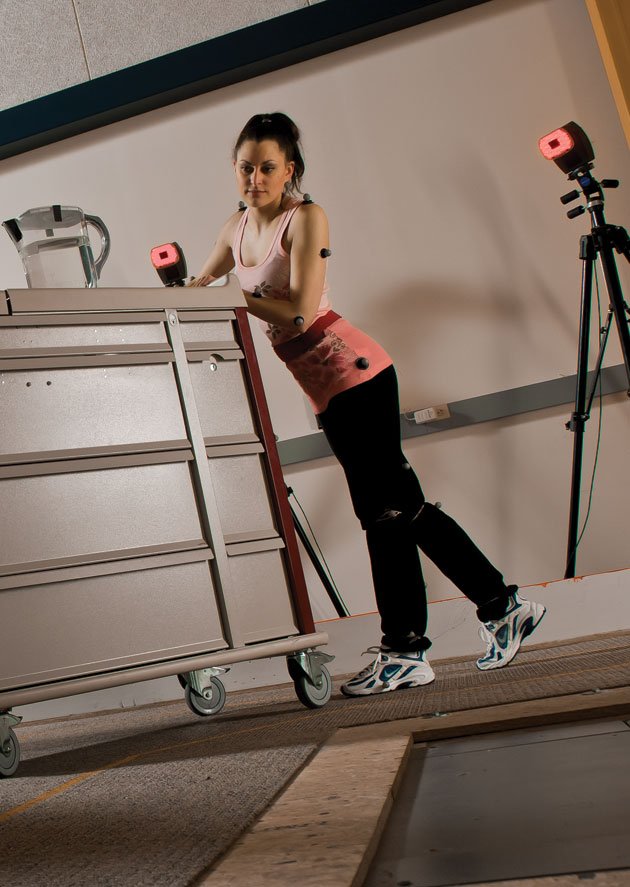
Its four main areas of study are traumatic injury, overexertion/repetitive motion, driving-related injuries, and slips and falls. Each receives analysis in its own center, and the results are published in peer-reviewed publications so that everyone can benefit. "It isn't exclusively for Liberty Mutual's purposes," said Dr. Y. Ian Noy, who has been the institute's director since 2006. "It's something we share with everyone who has an interest in workplace safety and disability. Our mission is really altruistic in nature."
The institute maintains some 25 researchers with an array of specializations, something that its director believes is key to developing new insights into age-old problems. With personnel ranging from biostatisticians and engineers to doctors and psychologists, the institute is able to get a 360-degree view.
"It allows us to look at specific injury categories from a number of different perspectives," said Dr. Noy. "Many of these problems are multi-faceted. For example, the injuries arising from slips and falls have a decidedly behavioral component because how people conceive the floor surface and the slipperiness of it will help them adjust their gait appropriately -- or inappropriately as the case may be. And their gait then translates into biomechanical risk and tribology, which is the interaction between the shoes and the floor surface."
All that, and we are merely talking about walking across some slick tiles. When it comes to worker activities like heavy lifting, and related research into the still-elusive understanding of back and shoulder injuries, there are even more lenses to look through.
Another way the institute is advancing scientific knowledge is by harnessing technology. In some studies, it has attached electronic sensors to the joints of subjects and put them through a series of physical tests. The biomechanical and other data is collected digitally, and analysts can then use the information to study how repetitive movement can damage the body.
While the company believes that digging deeper into stress injuries is vital, it also prides itself on its work in behavioral safety. One large study it is completing looks at "safety climate," which analyzes worker perceptions into the priority that the organization places on safety. "When productivity comes into conflict with safety, sometimes safety isn't the number-one priority," said Dr. Noy. "And workers begin to develop a sense of this from the messages that they get from their supervisors...and from talking amongst each other. They develop shared perceptions about safety."
Not surprisingly, it is this cultural aspect that is increasingly being seen as a -- if not the -- leading driver of workplace safety. "It has been demonstrated very, very compellingly that the safety climate of an organization is predictive of injury level," said Dr. Noy. "The safety climate perceptions shape behavior, and behavior shapes outcomes."
Liberty Mutual also uses its findings to directly help its policyholders. The company maintains field agents who discuss the latest findings with their clients, who are then able to use the information to improve safety and loss control at their workplaces.
The company sees this as a valuable service for its policyholders, but the benefits go both ways. "The beauty of this relationship is the two-way communication because those meetings lead to us getting a better appreciation for the real problems in the field," said Dr. Noy. "We come away with a better understanding of the trends, the experiences, that industry is facing."
–Jared Wade
Slipping for Science
Extreme weather can cause extreme injuries. Slips and falls due to icy, snowy walkways are the cause for innumerable tort lawsuits in the United States. The typical victim claims that a business or homeowner was negligent. The result could be costly for the property owner and debilitating for the person who fell.
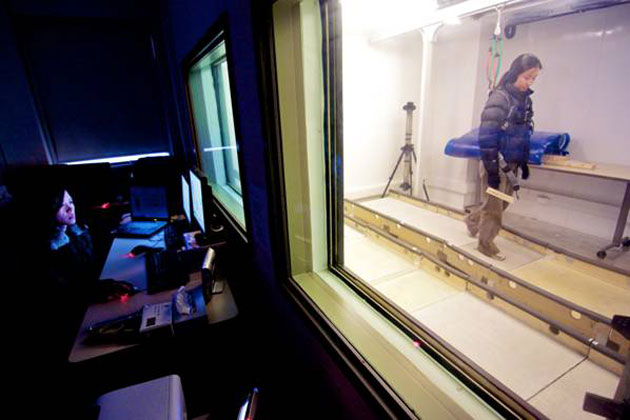
Preventing slips and falls is a difficult, if not impossible, mission. But that has not stopped the scientists at the Challenging Environment Assessment Laboratory (CEAL) from taking on the challenge. A part of the Toronto Rehabilitation Institute's Intelligent Design for Adaptation, Participation and Technology (iDAPT), CEAL is a massive underground lab that features the world's first hydraulic motion simulator, a technology that can mimic everyday environmental hazards.
In the lab, researchers recreate conditions such as ice and snow with varying terrains and slopes in research rooms that reach sub-zero temperatures and produce winds up to 10 mph. Scientists then test new products and technologies designed to prevent falls to see if they hold up in the real world. "We are using the labs to simulate realistic winter conditions so that participants can test the performance of winter footwear in safe and controlled environments," said Jennifer Hsu, a Ph.D. candidate in biomaterials and biomedical engineering at the University of Toronto.
To determine the effectiveness of footwear in these conditions, the researchers measure the friction between the ground surface and different types of footwear. They also gauge the speeds and distances over which people slip. This data allows them to judge how well various footwear designs and materials can minimize slips and falls.
Researchers work alongside both shoe companies and outdoor workers. "Footwear companies want to better their products and need to validate the performance claims that they make," said Hsu. "Our facilities offer the environment and expertise to do so in a way that has never been possible before."
To recreate slips and falls for research purposes, brave volunteers are needed. These individuals are equipped with a helmet and strapped to a safety harnesses to prevent them from hitting the floor. Motion sensors record their movements so researchers can study how a body moves when stepping and how that differs from person to person. Besides body movement, researchers are also testing how people walk in different types of footwear, depending on the degree of friction and the type of surface. The current focus has been on Canadian postal workers due to their need for better footwear in the harsh climate of the Great White North.
The CEAL researchers are looking to branch out to study different industries, however. The mining and construction industries have also expressed interest in working with the lab. Between this and the scientists' other research into how the body responds to heat and cold, it seems as though this Canadian research center will be keeping people safer-and warmer-for years to come.
–Emily Holbrook
Resiliency No Matter the Weather
When it comes to blowing things up in the name of science, the insurance industry has long turned to FM Global. But now there is a second location to destroy building materials.
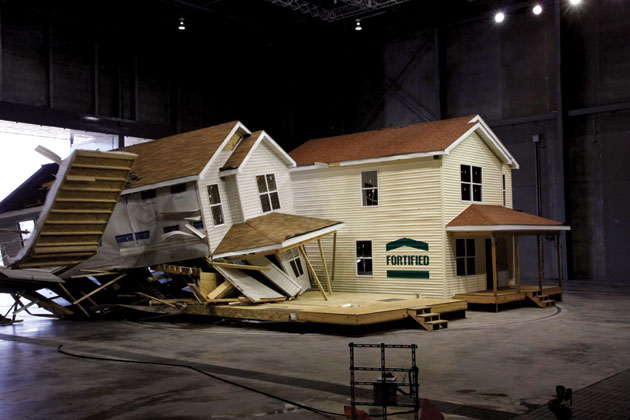
The Tampa, Florida-based Institute of Business and Home Safety (IBHS) opened its new research center last October in Chester County, South Carolina. And much like the FM Global Research Campus in Rhode Island, the institute uses its massive facility to replicate weather conditions that can damage property. But IBHS starts on the other side of the spectrum, primarily stress-testing residential buildings and smaller commercial facilities rather than mirroring the industrial property focus of FM Global. "Nobody does that better than them so there is really no point in trying to recreate the wheel," said Julie Rochman, president and CEO of IBHS.
Instead, the institute concentrates on what it can add to the public discussion of improving resiliency. "We're going to provide a lot of data that doesn't exist right now about where residential and commercial structures are vulnerable," said Rochman. "If we can figure out in detail how structures come apart then we'll have a much better idea of how to keep them together."
One major project underway looks at how wildfires spread. Research has shown that it is often not the roaring flames on the ground that set a structure ablaze. Many catch fire through less sensational means more akin to how dandelions reproduce. "It's not really the walls of flame that take out residential and commercial properties," said Rochman. "It tends to be the embers that travel in the wind well beyond the perimeter of the fire and land some places that the fire services aren't."
Of course, this process is so subtle that scientists have yet to examine why some embers that land on a building reduce it to a charred foundation while others flame out. In its climate-controlled lab, IBHS, along with research partners including the U.S. Forest Service, the Missoula Fire Sciences Laboratory and the Department of Energy's Oak Ridge National Laboratory, will be able to replicate this scenario over and over again to gain valuable insight.
In addition to fires, the facility has the ability to create intense windstorm conditions. One recent test shows just how important resiliency can be in protecting buildings. The institute constructed two houses that were nearly identical. The key difference was that one was built to standard building codes enforced in the Midwest while the other was further fortified in a few relatively simple and inexpensive ways. It was fitted with high wind-rated shingles, roof cover and siding as well as a secondary water barrier on the roof. The builders then installed metal straps that tied the roof to the second floor walls, the second floor walls to the first floor walls and the first floor walls to the foundation. And the front door was installed to open outward instead of inward. It was the same door as the other house, just mounted differently. Other than that, and using larger nails and thicker wood in a few areas, the houses were constructed the same.
The researchers then turned on the lab's 105 fans, each of which is nearly six feet in diameter. "We can...engulf test specimens in a realistic wind field in a way that no one else can," said Rochman. "We get the wind coming in then separating around the building and rejoining at the back so you see all the vertices, gusts and other things that actually happen in a real-world windstorm."
What happened in this test was telling. The fortified house withstood a long onslaught of wind with only cosmetic damage. The built-to-code house, on the other hand, quickly started to fail as the siding began to buckle, the flashing came loose and the shingles started to fly away. As the house's exterior envelope became compromised, enough vulnerabilities developed to allow the wind to lift the house like a kite, sending the entire structure crashing against the lab's giant interior wall. In the background, the fortified house still stood.
Right now, IBHS can create winds up to 140 mph, enabling it to replicate Category 3 hurricanes, the edge of a tornado or intense thunderstorms. Soon, it will be able to create Category 5 hurricane-force winds. And this, along with its fans' ability to pivot off-center up to 15 degrees, will allow the institute to not only test materials against the wind strength of the most violent storm but also against its lateral wind sheer.
To truly mimic a real-world disaster, however, you need debris and precipitation. The first part is easy enough; researches can simply throw materials into the wind stream. Then comes the rain, which is also relatively simple to create -- especially when you have a 750,000-gallon water tank at your disposal. The true challenge is to replicate precipitation exactly how it falls in the real world.
"We are working on a special nozzle system with the University of Florida that will allow us to inject up to eight inches of rain per hour -- variable droplet size rain, so that as the wind speed accelerates, the droplet size decreases and the shape of the droplets change," said Rochman. "That's what happens in Mother Nature. We'll be able to recreate those same storm conditions."
Other precipitation is even more difficult to master. But Rochman is confident that the institute will soon get it right. "We're developing the ability to make it hail indoors," she said.
Scientifically testing the damage that hail can inflict is not altogether unique. FM Global, among others, has used pneumatic tubes to launch ice balls against siding, windows and roofing materials. But such methods do not capture all the nuances of the destruction that hailstorms cause.
"Typically they fire one [ice ball] out of a hail cannon or a pneumatic tube," said Rochman. "We want lots of them because it doesn't hail one stone at a time...What we're going to do is multiple hail stones that are very realistic in terms of a layering effect because hail freezes and thaws as it comes down through the atmosphere. But there is also wind involved in hailstorms, and that's what nobody else has introduced. You get the bending moments and the lateral, angled strikes."
That is the key to advancing resiliency research: accuracy. Truly bringing the atmosphere and all its destructive powers indoors is impossible, but Rochman wants to be sure that IBHS is coming as close to reality as it can. And as the young lab matures, the areas it can study -- and the number of things it can destroy -- will only grow.
"We have this great facility, and the possibilities are kind of limitless," said Rochman. "People have asked if we can test wind turbines against hail impacts or wind resistance. Can we test railroad cars? Could you look at storage containers stacked up in a port? Could you look at 18-wheelers? We could look at a lot of stuff. The question becomes, in what order you do those things and what are your priorities? Our challenge at this point is that we're a brand new facility, and we have so many people wanting to do things with us."
That sounds like a good problem to have -- both for the institute and for an industry eager for better science to promote resiliency.
–Jared Wade
